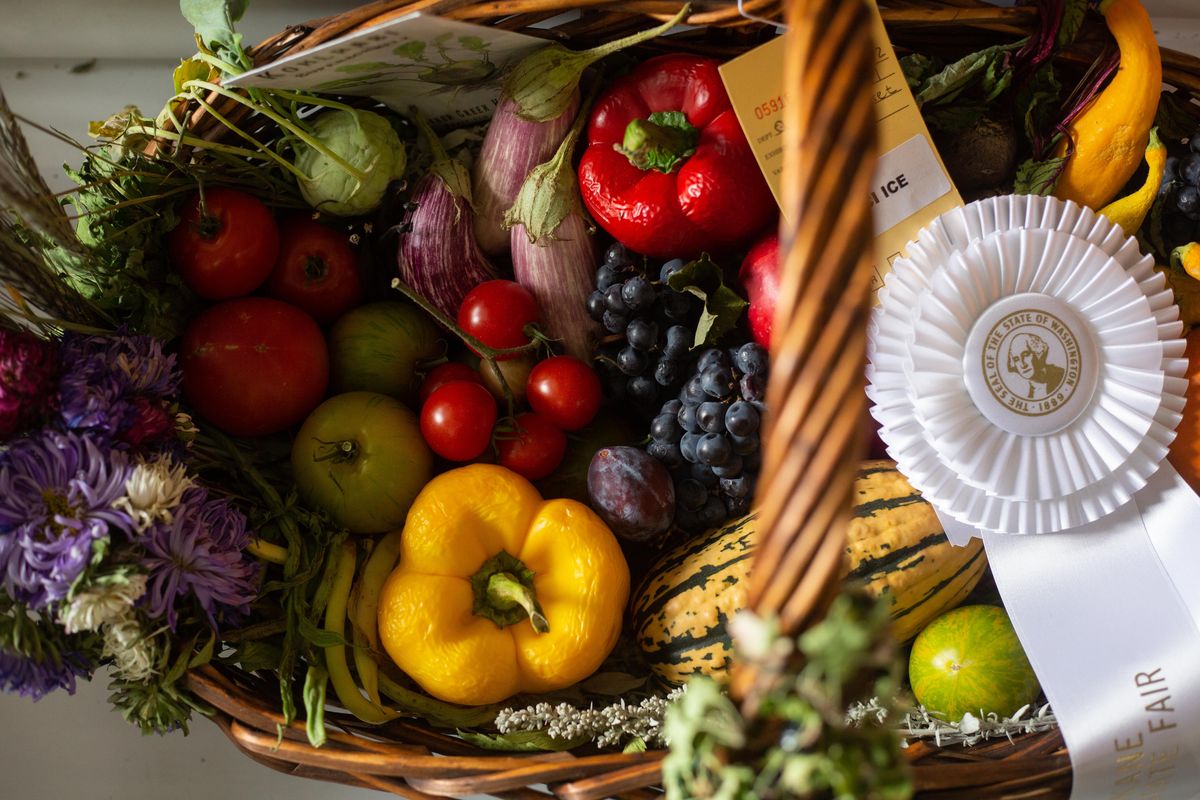What makes a tomato a grand champion? A Spokane County fair judge explains.

Take it from those who love it most: The Spokane County Interstate Fair will grow on you – much like the pumpkins in the Agriculture Building.
Weighing 400 pounds and more, they occupy the inside entrance as fair-goers ponder the possibilities of a mammoth pumpkin pie.
Forget about it, because the bigger they are, the worse they taste.
That goes double for the 34-pound turnip that one fair worker commented must have been grown with seeds imported from Hanford.
That drew a laugh from Bonnie Sewell, superintendent of the Agriculture Building. A lifelong Spokane resident and longtime judge at fairs and grange halls, she’s critiqued everything from cabbages to canned goods.
“I can’t image being anywhere else the first two weeks of September,” the 73-year-old Sewell said. “There’s never a bad day at the fair.”
Sometimes she even judges the judges, who gather every September in the building, otherwise known as Spokane County’s High Court of Horticulture.
Four years ago, the honey competition turned sour when one of the entrants complained that her buckwheat honey had been relegated to a white ribbon.
As it turned out, the judge wasn’t sweet on buckwheat honey, which was darker and less translucent than its competition.
“A couple of the other judges came to me and said, ‘We have a problem,’ ” said Sewell, who combed through the problem and proclaimed: “We need to change our criteria.
“I gave it a blue ribbon.”
Clearly, this is no easy job. The Agriculture Building is full of healthy food, but this is no garden-variety grocery aisle.
It’s always been that way. This year’s fair theme, “Lettuce Turnip the Jam,” is a tribute to its roots, an acknowledgment that long before elephant ears, they were judging ears of corn.
Every September, the Agriculture Building houses the finest home-grown foods in the region. As a reflection of the high quality of backyard gardening in Eastern Washington, about half receive blue ribbons.
That’s because judging operates on the Danish System, under which your prize tomato competes against a certain standard and not against the competition.
The standards are fourfold for all 85 categories of vegetables, which includes six subgroups for tomatoes (ripe, green, red salad, green salad, yellow preserving and “other”), nine for beans and 14 for squash.
“It used to be that a tomato was a tomato,” Sewell said. “Now we have so many different varieties.”
Entries are evaluated for uniformity, appearance, color and freedom from pests.
Success brings a blue ribbon, while imperfections mean red or white, with demerits explained on the back of a card attached to the ribbon.
“Turn over the card,” said Sewell, who spotted splotches on a red-ribbon bunch of tomatoes.
Then she pointed out that the veggies have been sitting at room temperature for more than a week, and were in better shape when they were judged.
In the Agriculture Building, everybody wins. Even entries that are disqualified earn multicolored “participant” ribbons.
For the top of each class, judging moves to the American system, whereby the best compete for Grand Champion and the chance for prize money.
That’s when things can grow out of proportion.
A few years ago, a gentleman submitted 85 entries in the herb categories and walked off with several hundred dollars in prize money.
It was the same story in the back of the room, where sunflowers – some complete with roots – filled the wall from floor to its 16-foot-high ceiling.
As with the pumpkins, size mattered. Judges armed with tape measures awarded champion ribbons to two sunflower heads measuring 17 inches in diameter.
Another award went for the sunflower head with the most seeds.
“Can you imagine having to count all of those?” said Sewell, who moments later was marveling at the the creative entries fashioned out of all natural materials.
One contestant fashioned a porcupine out of grass and tomatoes. The grand champion was a diorama of squirrels carved out of sweet potatoes, complete with a landscape of sunflowers.
“It really is amazing,” Sewell said.